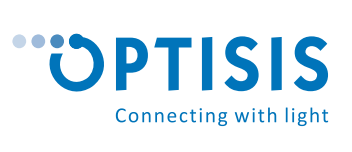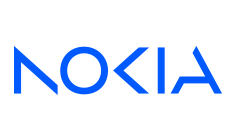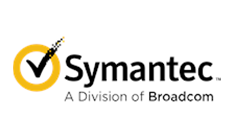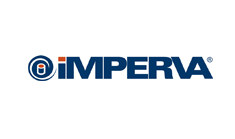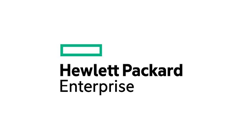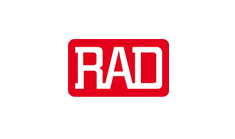Deploy preventive measures
Identify the deficiencies in external, publicly available services, servers, and applications which might help an attacker enter your network or gain other unauthorised access to important business information.
Check out various possibilities of misuse
Use an external security review to test the probability of breaking into the information system via the Internet network. The review is designed for public services, which are the most frequently exposed to attacks.
The service is implemented in a “blind” manner, which only requires you to provide a set of public IP addresses. In this manner, the real-life attack mode is approached to the greatest extent possible, since the attackers do not have much information about the environment (i.e. security systems, topologies). It is implemented in a way that minimises the impact on the IT systems operation – all tests for which it can be reasonably assumed that they cause interference (unless otherwise agreed) are eliminated.
The testing results can be compared with similar test results, as the examination is performed using the CVSS matrix method, which ranks and scores vulnerabilities by a publicly recognised methodology.
What are the benefits?
A detailed written report revealing the flaws and vulnerabilities which might help an attacker enter your network or gain other unauthorised access to sensitive business information.
Frequently asked questions
Everything you need to know about performing an external cybersecurity review.
What does an external security review include?
The external security review includes an overview of all servers, services and applications that are visible from the Internet and located at an IP address which has been publicly declared to belong to the client. The review provides information on:
- a complete inventory of servers, services and applications visible from the Internet,
- the technical data contained within these services, and applications that are visible to external users,
- a summary of the security assessment and the results of the security deficiency malpractice test,
- an overview of the detected and confirmed security deficiencies, including a more detailed description, an indication of the potential consequences of the abuse, and recommendations/instructions for their removal.
What is not included in the external security review?
The external security review does not apply to applications and services hosed by third parties (example: the website of the contracting entity hosted by a provider of such service).
Furthermore, it does not necessarily include all manual methods, which are primarily used for more detailed detection of deficiencies in various web applications or other specific applications. As a rule, the service is limited to those defects that can be detected using different tools. The manual part is then intended to validate these defects, which means its purpose is not so much to discover any new/additional ones.
An external security review does not include documentation, security system settings, and source code for various applications. All these activities are included in other types of security checks.
It also does not include the DOS attack verifications (deficiencies that represent an attacker’s ability to disrupt the service operation).
How is an external security review different from other similar services?
Besides targeting only those parts of the system that are visible or accessible from the Internet, there are certain differences when it comes to the approach and methodology.
Testing is based on the use of different tools, which is important in comparing results and minimising the falsely perceived deficiencies (i.e. false-positives), as well as minimising the possibility of overlooking a specific deficiency (i.e. false-negative).
Manual work is primarily used to check further for perceived vulnerabilities rather than to detect new ones.
Since the service is based on the use of tools, it is aimed at detecting vulnerabilities arising from the operating system versions and/or services, as well as settings that directly affect the service operation. As a rule, specific defects unique to the contracting authority are not verified through such reviews.
Can the perceived security defects be confirmed?
One should always strive to confirm the perceived safety deficiencies. The method of perceiving deficiencies is based on two principles:
- During the execution, an attempt is made to determine the version of the operating system or the service. Once this information is obtained, all possible deficiencies of the system can also be known. However, these deficiencies may be real or indirect, i.e. false-positives. The servers and services accessible from the Internet are generally well protected, which means that it is not always possible to determine the exact version of the software. Sometimes, this information is only partially identifiable or even false, which makes it likely that the identified defects are, in fact, false.
- Another principle of identifying deficiencies is by actually testing the responses of applications and services. However, these responses generally look for symptoms rather than directly checking for deficiencies.
Therefore, the detected defects should always be checked in order to perform a precise review of the actual ones. In doing so, the unnecessary alerts are avoided, which gives credibility to the report.
The actual possibility of misuse in specific defects is always checked manually, as it is often necessary to use a specific parameter in the malpractice test, or else the malpractice test must be carried out in different ways.
What is the result of an external security review?
A detailed written report consisting of two parts, which are presented in the form of a workshop:
- Management report
It is a concise overview for executives, providing the basic cybersecurity information. - Technical report
It details the scope of perceived vulnerabilities and provides a description and assessment of the consequences, as well as the potential for abuse, while also detailing an overview of realistic misuse scenarios and recommendations for their abolition.
When is it best time to perform a review?
The answer is at any time. Public services are regularly targeted by attackers, which is why the risk of misuse is constant.
Here are some of the excuses or reasons for not performing the review that we often hear and that are extremely dangerous in terms of guaranteeing security:
- We plan to renovate the firewall next year, so it is best to carry out a review at that time. But what about security until such time?
- We do not have anything of the sort on our Internet network. Our website is hosted. As a company, we are less interesting to hackers, which is why a review is unnecessary. That is, of course, not true! Often, the Internet network reveals much more than the client is aware of. The fact also remains that attackers are never not interested in you. For example, they can exploit your weakness to further attack larger systems.
- We did a review a few years ago, but it showed nothing special. We have not changed anything since, so we are probably still safe. Again, not true! Attackers are constantly finding new ways of abuse.
How often should I perform such a review?
A general opinion is that such a review should be carried out when it comes to changes in the environment. However, this is not necessarily true. Even if nothing changes in the system, the probability of a breach can still increase. Attackers are constantly discovering new ways of attacking web applications, so just because something was safe yesterday it might not be safe today.
It is in fact quite the opposite. If you have “not changed anything” in the system, it means you also failed to introduce new patches and upgrades of the operating systems and servers in the recent period, which makes the need for such a review even greater.
Employees – the strongest link in the safety chain
Regularly educating employees on hacking threats that can occur during the use of the Internet and of communication devices is critical to increasing cybersecurity in the company. Our experts are providing trainings on the following topics:
- who are the hackers and why they are dangerous,
- what is social engineering,
- how do hackers get your information,
- how to identify a fake website …
Why can you trust us with the external cybersecurity review?
As external independent consultants with specific knowledge and experience based on mutual trust and respect for data confidentiality, we can objectively assess the level of client’s security.
Reduce the possibility of a successful attack
An independent security screening reveals the greatest vulnerabilities and analyses the state of the client’s information system, providing recommendations for removing such vulnerabilities.
Partners in the field of technology
We work with global leaders in specific technology segments
All logos
Explore further
